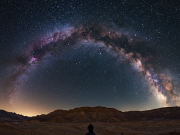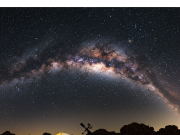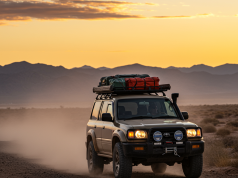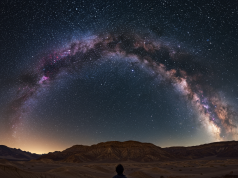When daylight fades, a whole new world emerges above us. Vast, glittering constellations, the hazy band of the Milky Way, and fleeting meteor showers transform the night sky into a cosmic spectacle. Astrotourism brings travelers from all corners of the earth to remote locations with minimal light pollution, offering unforgettable encounters with the universe. In this guide, we’ll explore everything you need to plan your own stellar journey: from the best dark-sky destinations to packing tips, ideal travel seasons, and safety considerations.
1. What Is Astrotourism?
Astrotourism, sometimes called astro-tourism or stargazing travel, focuses on visiting destinations renowned for their exceptional night-sky visibility. Unlike typical vacation spots, these locales prioritize conservation of darkness, often through designated dark-sky parks or reserves.
2. Why Travel for the Stars?
- Immersive Natural Beauty: Witness the Milky Way arching across a pitch-black canvas, watch shooting stars streak overhead, and catch planets rising in the east.
- Unique Photography Opportunities: Capture long-exposure images of constellations, star trails, and the Aurora Borealis if you venture north.
- Educational Experiences: Join guided astronomy tours, attend nighttime workshops, and learn to identify celestial objects.
- Digital Detox: Remove yourself from city lights and digital noise for a restorative, mindful experience under the cosmos.
3. Top Dark-Sky Destinations Worldwide
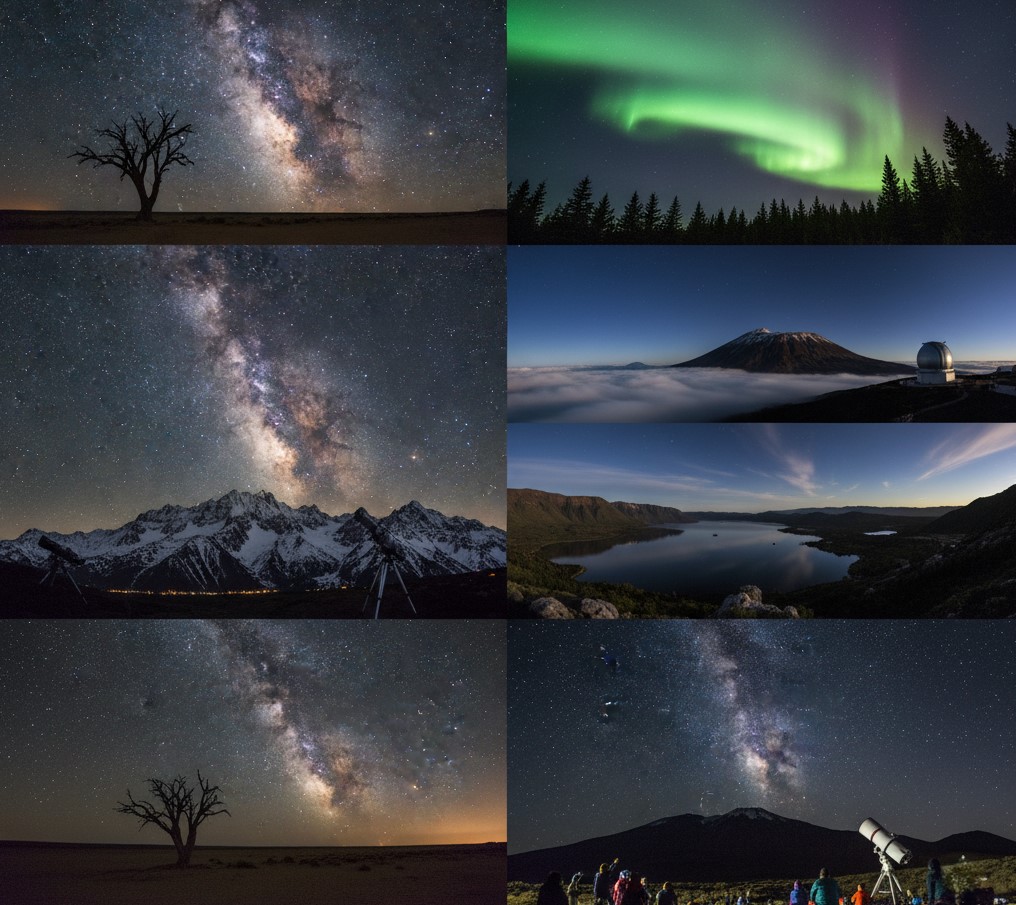
Light pollution blocks out up to 80% of the stars in many urban centers. To gain an unobstructed view, consider these bucket-list locations:
- Aoraki Mackenzie, New Zealand: The world’s largest International Dark Sky Reserve, offering unobstructed southern-hemisphere skies.
- Mauna Kea, Hawaii, USA: At over 13,000 feet in elevation, visitors can stargaze above much of the atmosphere’s moisture.
- NamibRand Nature Reserve, Namibia: Africa’s first Dark Sky Reserve boasts vast desert plains and minimal human development.
- Kiruna, Swedish Lapland: A prime spot for Aurora Borealis viewing, combined with Sami cultural experiences.
- Tenerife, Canary Islands, Spain: Mount Teide National Park offers high-altitude clarity and organized star parties.
- Jasper National Park, Canada: Designated a Dark Sky Preserve, with guided evening programs and ranger talks.
4. When to Go: Timing Your Celestial Journey
Seasonal and lunar cycles greatly affect stargazing quality. Keep these factors in mind:
- New Moon Phase: Aim for the week around a new moon to minimize moonlight interference.
- Meteor Showers: Plan trips around major events like the Perseids (August) or Geminids (December).
- Local Climate: Choose dry seasons for clearer skies and fewer clouds.
- High Altitude: Mountains and plateaus often sit above haze layers, enhancing visibility.
5. Essential Gear for Stargazers
A little preparation elevates your experience. Pack these must-haves:
- Star Chart or Smartphone App: Tools like SkySafari or Stellarium help identify constellations.
- Binoculars or Telescope: Even a modest telescope reveals craters on the moon and Jupiter’s moons.
- Camera with Manual Controls: A DSLR or mirrorless camera with a wide-angle lens for long exposures.
- Tripod: Crucial for stable, shake-free night photography.
- Warm Clothing: Nights can be surprisingly cold at high altitudes or in deserts.
- Red-Light Headlamp: Preserves night vision while navigating campsites or adjusting equipment.
6. Planning Your Itinerary
A balanced astrotourism trip combines daytime activities with nighttime observations. Sample itinerary:
- Day 1 – Arrival and Acclimatization: Check into your lodge or campsite, unpack gear, and test equipment before dusk. If you’re arriving via train, remember to check train travel tips for scenic routes and quieter cabins—many dark-sky destinations are accessible by rail, offering a relaxing and eco-friendly travel option.
- Day 2 – Cultural & Natural Exploration: Hike scenic trails, learn about local astronomy myths, and attend a pre-dinner star talk.
- Night 2 – First Stargazing Session: Scout a vantage point, set up telescopes, and capture your first astrophotos.
- Day 3 – Astronomy Workshop: Join a ranger or astronomer for a hands-on session on star mapping.
- Night 3 – Meteor Shower Viewing: If timed right, lie back and watch meteors under peak shower activity.
- Day 4 – Departure: Enjoy a final morning sunrise over the landscape, pack up, and reflect on your cosmic journey.
7. Safety and Environmental Etiquette
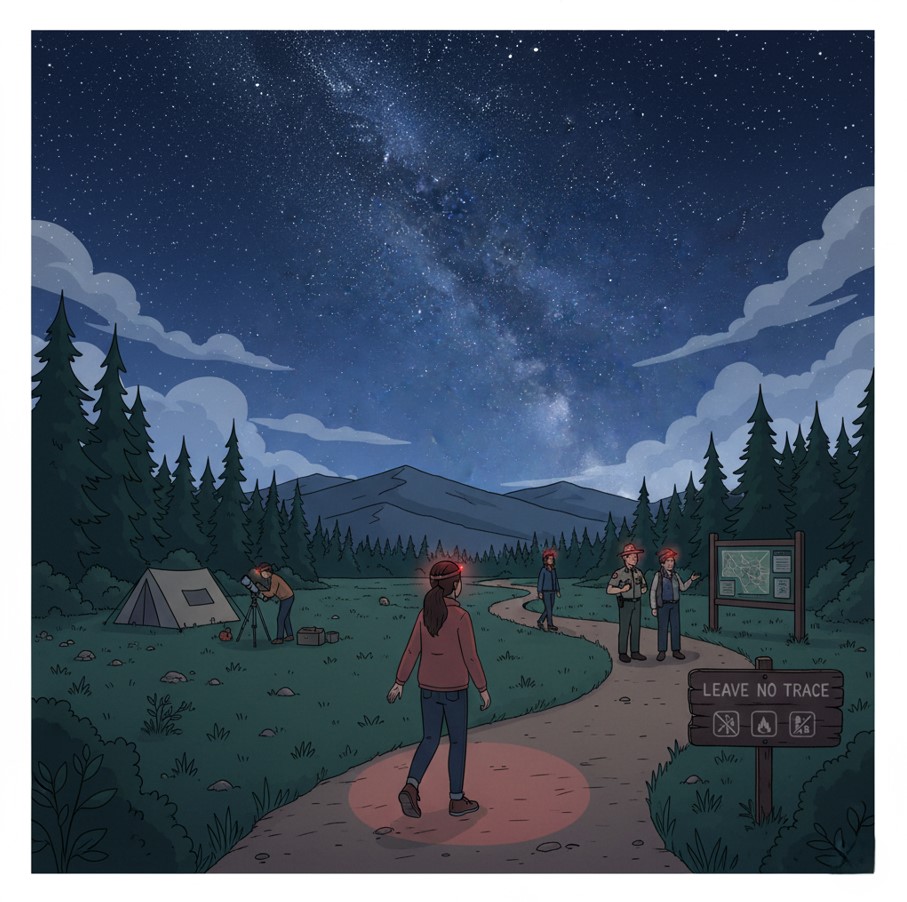
Protecting fragile ecosystems and respecting local communities is vital. Follow these guidelines:
- Stay on Designated Paths: Avoid trampling vegetation or disturbing wildlife.
- Minimize Light Pollution: Use red-light torches, avoid smartphone screens, and keep campsite lighting low.
- Follow Leave-No-Trace Principles: Pack out all trash, and respect protected area rules.
- Inform Local Authorities: Some regions require permits or guided escorts after dark.
- Weather Awareness: Mountain climates can change rapidly. Check forecasts and bring rain gear if needed.
8. Budgeting for Your Astrotourism Trip
Costs vary widely based on destination, accommodation style, and tour options:
- Accommodations: From rustic campsites ($15–$30/night) to eco-lodges ($100–$300/night).
- Guided Tours: Astronomy experiences may cost $20–$100 per person per session.
- Equipment Rental: Telescopes or camera gear rental runs $30–$80/day when not bringing your own.
- Transportation: Remote locations often require 4×4 rentals or small-group shuttles.
- Miscellaneous: Park entry fees, stargazing apps, and safety gear add up to $50–$150 overall.
9. Learning Resources and Apps
Deepen your astronomical knowledge with these tools:
- Stellarium: Open-source planetarium software for desktop use.
- SkySafari: Detailed mobile app with telescope control features.
- The Backyard Astronomer’s Guide: An Essential book for beginners covering equipment and techniques.
- Dark Sky Finder: Online maps highlighting low-light pollution zones.
10. Insider Tips for an Unforgettable Experience
Veteran stargazers recommend these pro tricks:
- Arrive Early: Give your eyes at least 20 minutes to adjust to darkness before serious observation.
- Dress in Layers: Nights can be deceptively cold even in summer—think thermal base layers.
- Use Manual Mode: For photography, start with a 20-second exposure, f/2.8 aperture, and ISO 1600.
- Scout Landscapes at Dusk: Find compelling foreground elements—rock formations, trees, water reflections.
- Mind the Moon: Even a half-moon can wash out fainter stars. Check lunar calendars.
Conclusion
Astrotourism invites you to step outside the routines of everyday life and reconnect with the larger cosmos. Whether you’re a novice gazing through binoculars or an enthusiast armed with a telescope and DSLR, the thrill of discovering distant galaxies and witnessing celestial events is unmatched. By choosing a respected dark-sky destination, planning around moon phases, packing thoughtfully, and respecting local guidelines, you’re set for an epic journey under the stars. So pack your red-light headlamp, chart your course for a remote vista, and prepare to be awestruck by the universe’s grandest display.
Ready to chase the stars? Bookmark this guide, gather your gear, and start planning your next astrotourism adventure!
Learn more about: Microadventures 101: How to Plan Epic Short Trips Close to Home


